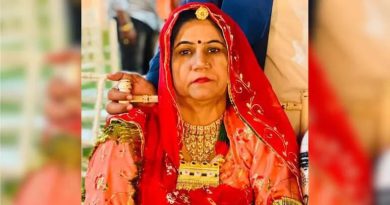“Highly Objectionable”: Top Court on High Court’s Remark On Widow, Make-Up
Terming as “highly objectionable” the observation made by a high court about make-up articles and a widow, the Supreme Court on Wednesday said such a comment was not commensurate with the sensitivity and neutrality expected from a court of law.
The Supreme Court was dealing with the appeals filed against a verdict of the Patna High Court in a murder case of 1985 in which a woman was abducted and later killed, allegedly to obtain possession of a house belonging to her father.
The high court had upheld the conviction of five persons in the case and had set aside the acquittal of two other co-accused. It had convicted the two persons, who were earlier acquitted of all charges by a trial court, and sentenced them to life.
A bench of Justices Bela M Trivedi and Satish Chandra Sharma noted the high court had examined the question of whether the victim was actually residing in the house from where she was alleged to have been abducted.
The top court also noted that relying on the testimonies of the maternal uncle and brother-in-law of the woman as well as the investigating officer (IO), the high court had concluded that the victim was residing in the said house.
The bench noted the IO had inspected the house and no direct material, except some make-up articles, could be gathered to indicate that the victim was actually residing there.
It said admittedly, another woman, who was a widow, was also residing in the same portion of the house.
The bench noted the high court did take note of this fact but explained it away by observing that since the other woman was a widow, “the make-up articles could not have belonged to her as there was no need for her to put on make-up, being a widow”.
“In our opinion, the observation of the high court is not only legally untenable but also highly objectionable. A sweeping observation of this nature is not commensurate with the sensitivity and neutrality expected from a court of law, specifically when the same is not made out from any evidence on record,” the bench said in its verdict.
It said mere presence of certain make-up articles cannot be conclusive proof of the fact that the woman was residing in the house, especially when another woman was admittedly residing there.
“The make-up articles were linked with the deceased on the basis of a completely unacceptable reasoning and without any corroborative material,” the bench noted.
It said no personal belongings of the woman such as clothes and footwear could be found in the entire house.
The bench noted that the victim had died in August 1985 in Munger district and a report was lodged by her brother-in-law that she was abducted by seven persons from their house.
The bench noted that an FIR was lodged and later, a chargesheet was filed against seven accused.
The trial court had convicted five accused for commission of offences, including that of murder while the other two were acquitted of all charges.
In its verdict, the Supreme Court said there was no direct evidence on record to prove the commission of murder by the accused persons.
“As regards motive, we may suffice to say that motive has a bearing only when the evidence on record is sufficient to prove the ingredients of the offences under consideration. Without the proof of foundational facts, the case of the prosecution cannot succeed on the presence of motive alone,” the bench said.
The top court acquitted the seven accused of all the charges and directed that they be released forthwith, if in custody.
(Except for the headline, this story has not been edited by NDTV staff and is published from a syndicated feed.)
Disclaimer: (Only the headline and picture of this report may have been reworked by the KanoonKiBaat staff; the rest of the content is auto-generated from a syndicated feed.)
Source Link





